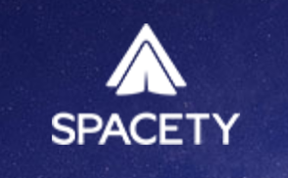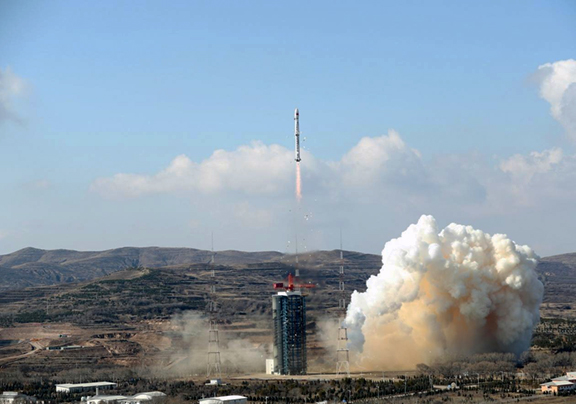

ThrustMe and Spacety have launched the first iodine-propelled smallsat.
The satellite was sent into space by a Long March 4B (CZ-4B) carrier rocket from Taiyuan Satellite Launch Center in China's Shanxi Province, on November 3, 2019, at 11:22AM (Beijing time). The 6U smallsat, built by Spacety, includes an iodine propulsion system developed and built by ThrustMe.

Known as the I2T5, this propulsion system uses a first-of-its-kind, non-pressurized, cold gas thruster fueled by solid iodine. Designed with cubesats in mind, the I2T5 will help ensure a sustainable space industry by extending the lifetime of satellite missions, and enabling collision avoidance maneuvers. In the future, ThrustMe’s additional, iodine based, electric propulsion systems, will additionally enable orbital changes, constellation phasing, and orbit maintenance.

A Chinese Long March 4B drives the iodine-propellant SPACETY and ThrustMe smallsat to orbit.
Ane Aanesland, Co-Founder and CEO of ThrustMe, said this is a historic launch in so many ways: for ThrustMe, for Spacety and for the whole space community. Iodine propellant is finally being demonstrated in space. The first time iodine was discussed as a good candidate to replace pressurized gases, such as xenon, was in 2008. Since then, many research institutions, companies and space agencies have worked on developing iodine propulsion systems, including NASA with its IceCube mission. That ThrustMe is the first company to succeed in launching the first propulsion system operating with iodine as a propellant highlights the significant impact startups can have on innovation and technology advancements.
This is ThrustMe’s first launch and the company has developed a wide portfolio of smart propulsion systems for smallsats. This mission puts ThrustMe on the map as one of the few space startups with commercially available and space proven propulsion products.
This launch also demonstrated a notable change in the space industry, where startups from Europe and Asia joined forces to develop a mission with an extremely rapid development time, from idea to launch in less than a year, from contract to launch in eight months. ThrustMe and Spacety, with this first launch together, have demonstrated the importance of open minded international collaborations, according to the firms.
The I2T5 has already generated significant customer traction and will be used to propel an ISIS 6U spacecraft for the Royal Thai Air Force, to be launched in 2020, as well as the ROBUSTA-3A satellite developed by the Université de Montpellier. Several other commercial contracts have also been signed, but these clients and missions remain confidential at this stage.
The development and industrialization of the I2T5 has been supported by the French government via the BPIFrance I-LAB, and the European Unions’ Horizon 2020 research and innovation program under grant agreement No. 823337. The French National Space Agency (CNES) is now supporting future I2T5 enhancements.
Dmytro Rafalskyi, Co- Founder and CTO of ThrustMe, added that the I2T5 is designed for cubesats — it required only six weeks from identifying a real market need, to having a first working prototype. This was achieved by leveraging all of the work already done to develop the iodine propellant storage and feed system for the ion engine.
Weijia REN, Co- Founder and CTO of Spacety Today, noted that when the company spoke with ThrustMe about the impressive achievements they had made in the development of iodine fueled propulsion, the company knew that Spacety would be up to this historic task to make it to space in record time. The firm also saw the potential in a long-term collaboration with ThrustMe to provide the best propulsion solutions to clients in China. The majority of 3U and 6U cubesats do not have any propulsion capability as no viable solutions are offered that are safe, simple, and cost effective. Satellite operators are weary of expensive and paperwork-intensive products that include pressurized systems or flammable propellants.

